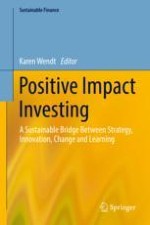2018 | OriginalPaper | Buchkapitel
Understanding Sustainable Finance
verfasst von : Olivier Jaeggi, Gabriel Webber Ziero, John Tobin-de la Puente, Julian Fritz Kölbel
Erschienen in: Positive Impact Investing
Aktivieren Sie unsere intelligente Suche, um passende Fachinhalte oder Patente zu finden.
Wählen Sie Textabschnitte aus um mit Künstlicher Intelligenz passenden Patente zu finden. powered by
Markieren Sie Textabschnitte, um KI-gestützt weitere passende Inhalte zu finden. powered by
